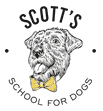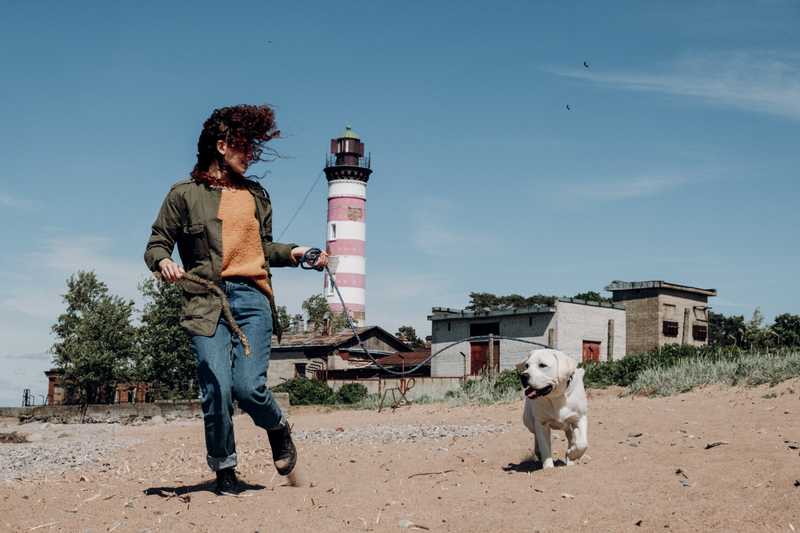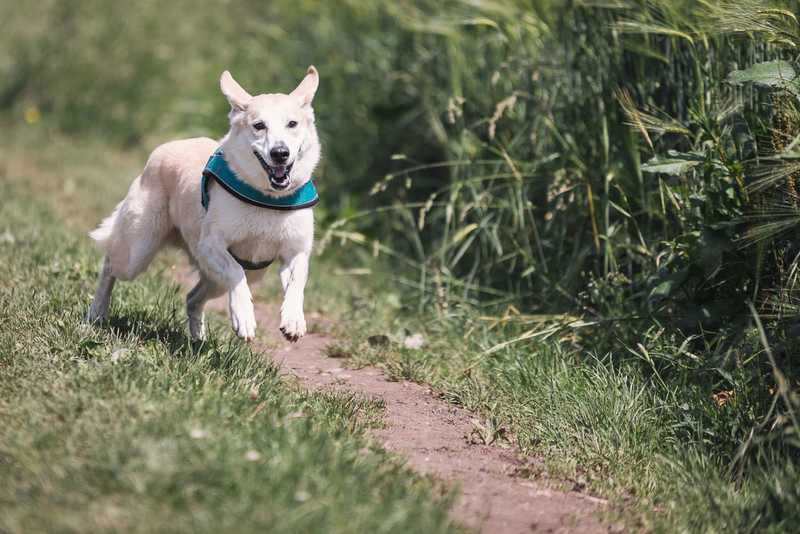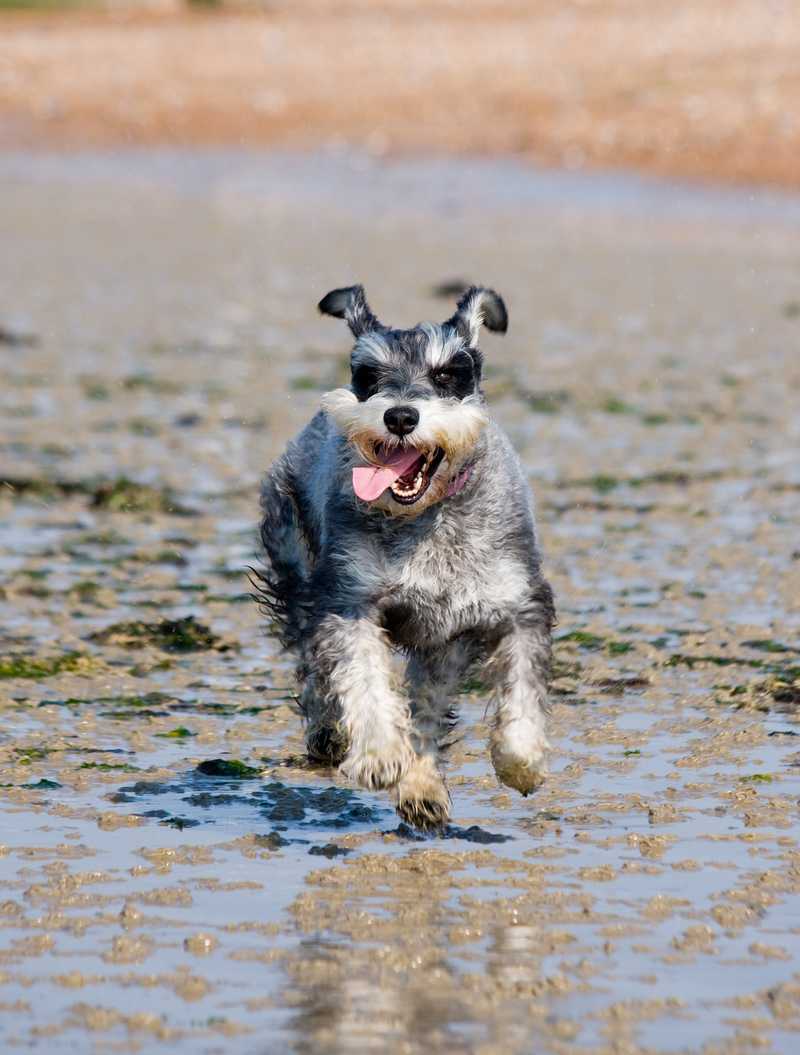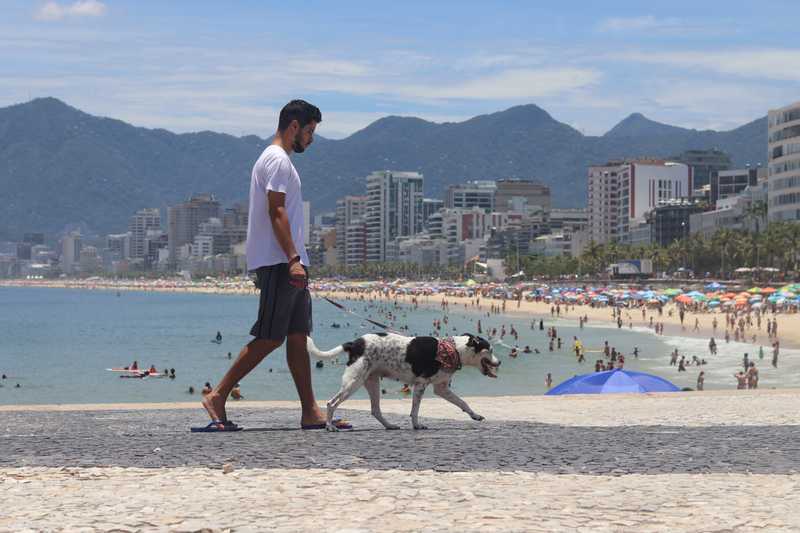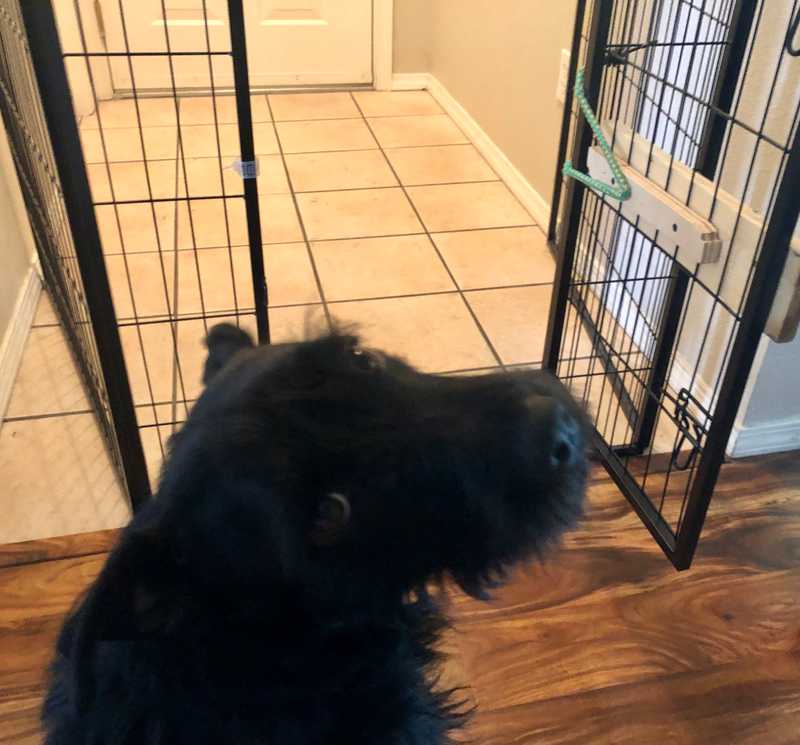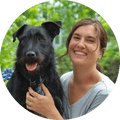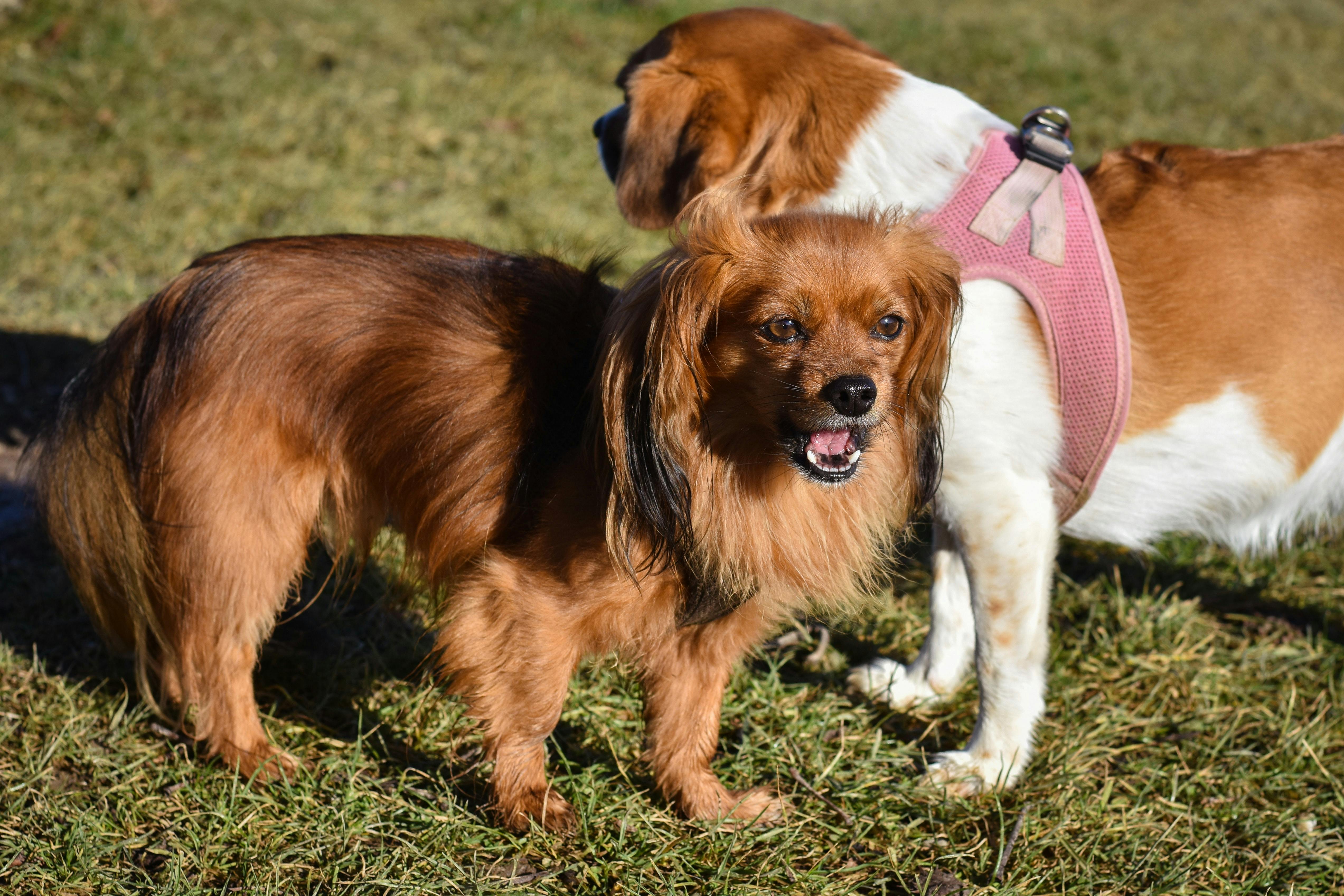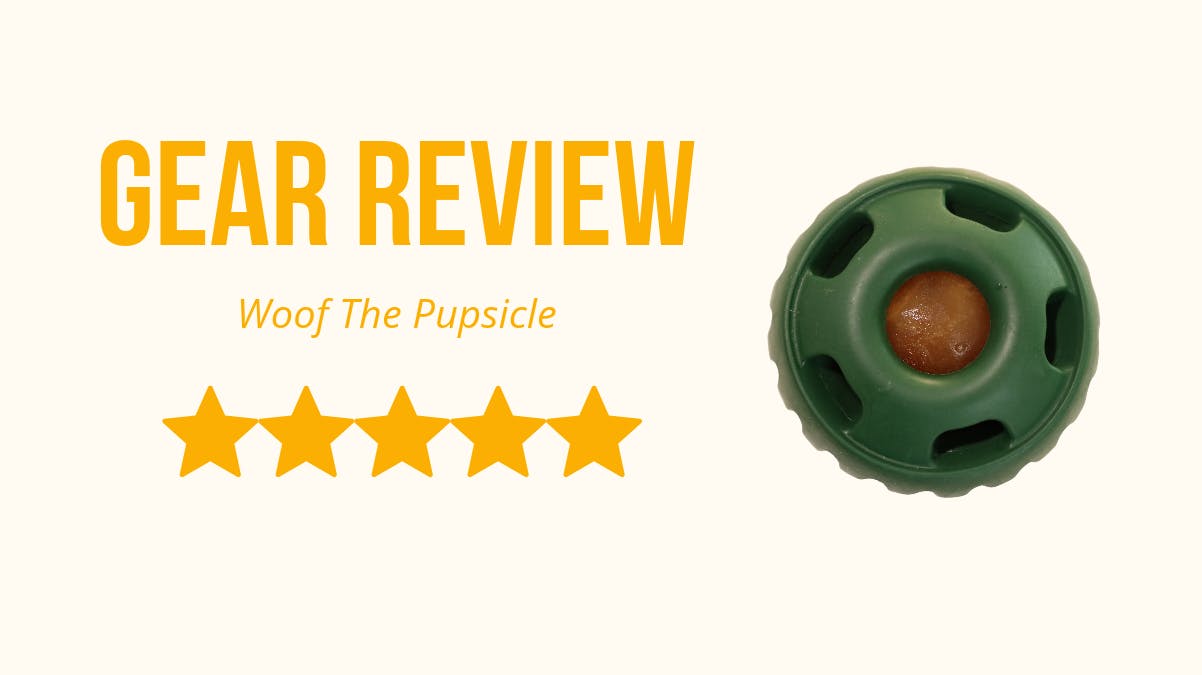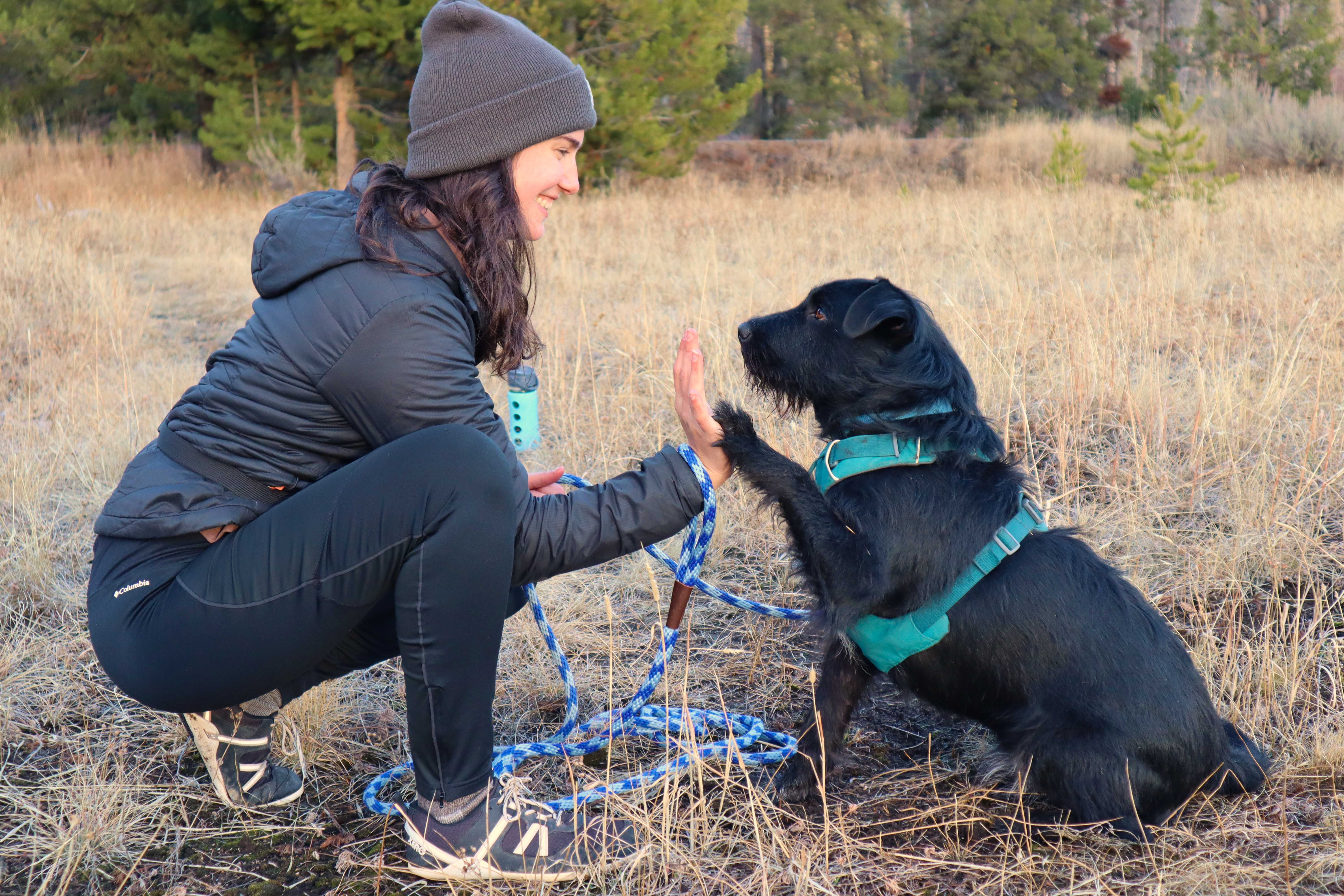How to Train Your Dog to Reliably Come When Called
Training tips | By: Taylor Wyllie, KPA CTP | Aug 21, 2022
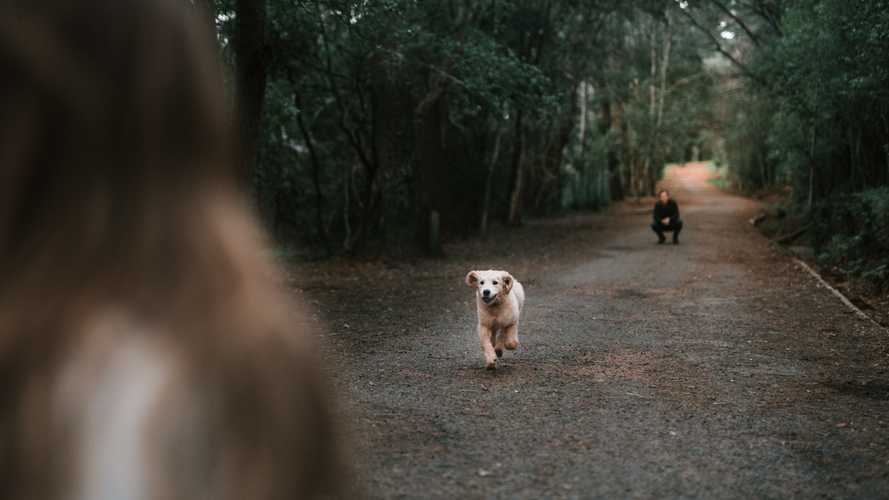
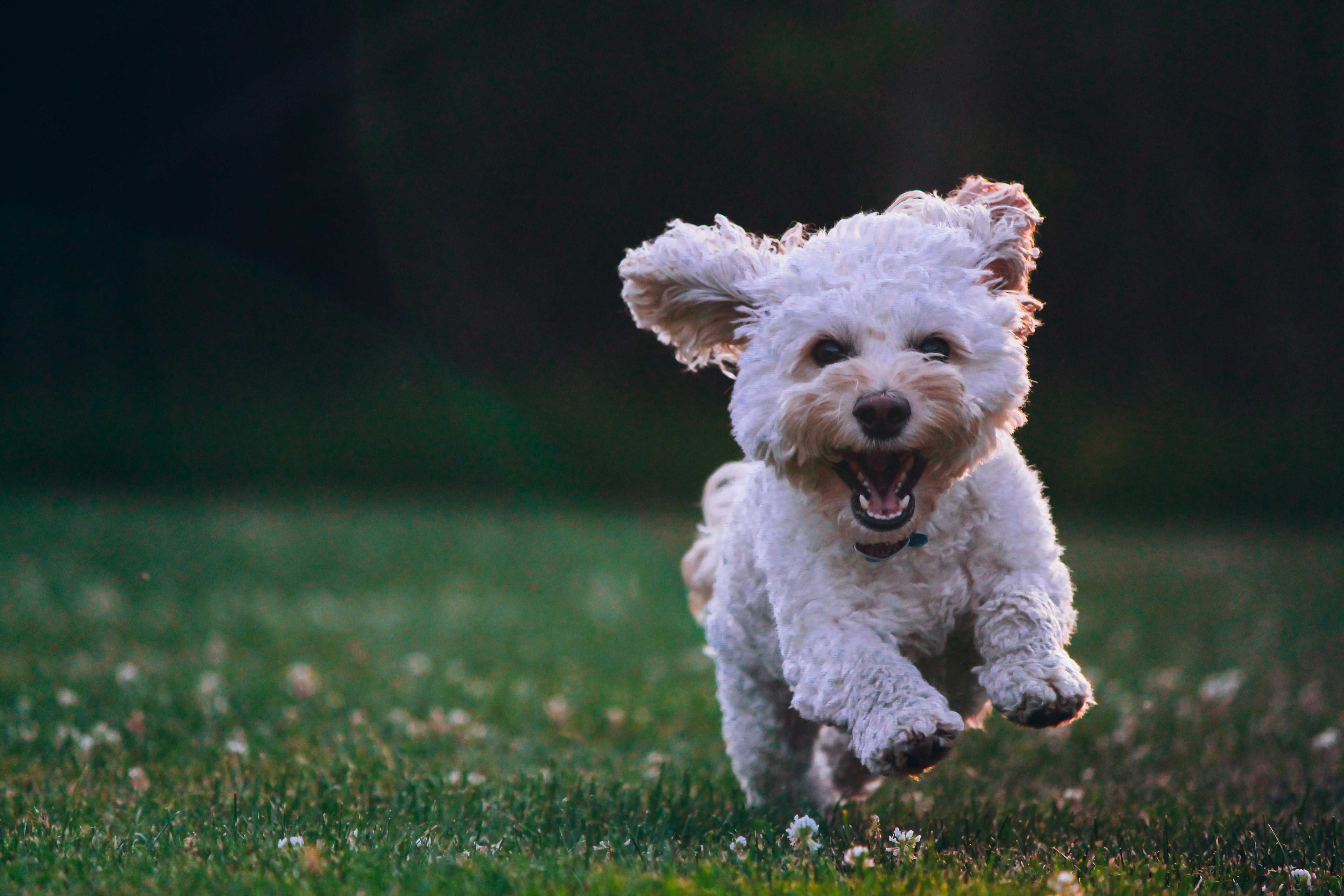
Unlock 10 Expert Puppy Training Tips!
Sign up with your email and receive a free video guide to transform your puppy into a well-behaved companion
Are you tired of calling your dog's name only to have them ignore you and keep playing? Do you dread letting your pup off-leash at the dog park, knowing that they might run off and ignore your calls to come back?
A reliable recall can be a game-changer for both you and your dog. Not only does it give you peace of mind, but it can also keep your dog safe in potentially dangerous situations. Plus, a strong recall can help your dog live a more enriched life. If your dog reliably returns to you, you can take your dog on decompressing off-leash hikes or play fetch in unsecured parks (keeping leash laws in mind).
Now, teaching your dog to reliably come when called takes time. It's like teaching a teenager to answer your calls — it may take some time and effort, but the feeling when it finally happens, well, that's priceless.
How Long Does it Take to Train A Dog to Come When Called?
It may take upwards of a year of consistent training to teach your dog a strong recall in the face of distractions. Some breeds are notoriously harder to teach a recall (looking at you, terriers), so it may take even longer.
Unfortunately, there are no shortcuts here. Just like you can’t take a shortcut in learning a foreign language. It takes as long as it takes—and consistency is key.
And you should work on recall for the duration of your dog’s life. That means always rewarding your dog for returning to you. Rewards may be food, play, or life rewards, such as the chance to return to whatever they were doing before or greet their favorite person (see the Premack Principle below).
As you teach recall, I suggest using a long leash when practicing in public and unsecured places.
There's No Such Thing as a 100% Reliable Recall
Before we dive in, I want to give the caveat that dogs are not robots. They cannot be programmed to work 100% of the time—and no good trainer would ever guarantee that you can train your dog to respond to a recall cue 100% of the time. Life is unpredictable. A strong recall will have your dog responding a majority of the time—maybe even 99.9% of the time—but a 100% simply isn’t possible. So, keep that in mind and do your own risk assessment.
You may have heard trainers say that the only way to train a 100% reliable recall is with an e-collar. This is a myth.
In fact, there is no difference in effectiveness between training recall with an e-collar versus rewards-based methods (even in the hands of experienced trainers). Dogs can and do run through e-collar shocks.
One study has even found that dogs trained with reward-based methods had a shorter delay before responding to their recall cue than dogs trained with e-collars.
How to Choose a Recall Cue
You want your dog's recall cue to be something short, snappy, and not-embarrassing to say in public. You may also want it to be something your dog can hear from far away, such as a whistle. Keep in mind, your dog can have multiple recall cues.
More importantly, you want to choose a cue that does not have a history of being ignored or a history of being punished.
For example, if you’ve been telling your dog to "come" before giving him a bath or clipping his nails, you should train a new recall cue.
Think about it this way, say you have a spouse who loves to cook. They cook dinner frequently. But when they say "dinner is ready" they only sometimes have a lovely home-cooked meal waiting. Other times, they give you a shot. One time they said "dinner is ready" only to make you sit down and pay your taxes. Pretty soon, when they say "dinner is ready" you'll likely feel fear or apprehension and decide it's not worth the risk for a home-cooked meal. You'd rather order delivery.
The same goes for our dogs. At the end of the day, responding to a recall cue is a choice. We can make it a choice our dogs are very likely to make, but it's still a choice. If they get punished for making that choice, they'll stop making it.
Examples of cues you can use:
- Come
- Here
- With Me
- Quickly
- Whistle
- Let's Go
Try to remember to say your recall cue only once. If you say come-come-come-come then your dog will think your recall cue is come-come-come-come instead of just come.
If your dog doesn’t respond the first time, try to understand why from your dog’s perspective. Perhaps you didn't give them enough time to think. Give them a second to remember what to do, especially in the face of distractions.
If you've given them a second and they still don't come, the environment may be too distracting for the level that you are at in training. Or maybe the word “come” has already been poisoned because your dog associates it with getting brushed. Assess and adjust accordingly.
With all of that said, let's get training.
How to Train a Reliable Recall
In this guide, I walk you through a few different exercises starting at the very beginning stages. There are multiple ways to teach a recall; I suggest using a few different methods at the same time to really help strengthen the behavior.
I’ll also walk you through a couple of different games you can play to really teach your dog to love coming back to you.
Recall Exercise A:
Level One:
- With your dog next to you, run forward a few feet. If your dog is on-leash, be careful not to tug on the leash.
- As your dog follows, click or say the word “yes.”
- Slow down enough that your dog can catch you and give your dog a treat.
- If your dog is staying glued to your side, deliver the treat on the ground, so that your dog is distracted by finding and eating it—giving you the time to move away from them. We want our dogs to have to catch up to us, not be at our sides already.
- Repeat 10-15 times.
- Add the cue. Say the word “come” (or your choice of recall cue) as your dog is finishing their treat and before they start moving toward you. When your dog starts moving toward you, click or say “yes,” and then give your dog a treat.
- Repeat with the cue 10-15 times.
- If your dog stops responding to the recall cue, simply repeat steps 1-3 again a few more times. Then reintroduce the cue.
Pro Tip: If your dog does not follow you, try to be more exciting in your body language or voice. If you need to, encourage your dog to come by making a kissy noise or high-pitched nonsense. Just be careful not to do this too many times or it will become the cue.
Level Two:
- With your dog in front of you, say “come,” and quickly back away 6-12 feet.
- Click or say “yes” as your dog starts to walk toward you.
- Give the treat in front of you at your dog's nose level (helps your dog to learn to come to your front).
- Repeat 10 times.
- Add a collar grab. Repeat steps 1-2. This time, as you give a treat, grab your dog’s collar. (Otherwise, your dog may return to you in "real life" situations, but pull away when you go to grab them.)
- Repeat 10 times.
Level Three:
Add distance by standing further away from your dog before you say “come.” In order to get that distance, you may ask your dog to stay, have someone hold them (ensure they let go when you say “come”), or toss a couple of treats on the ground to keep your dog occupied.
Level Four:
It's time to generalize the behavior.
- Vary your body position: standing, sitting in a chair, sitting on the floor, looking to the side, lifting one leg, etc.
- Vary if your dog is on-leash or off-leash.
- Vary the rewards you use. Try treats, play, and access to the environment.
- Vary the locations where you practice: inside different rooms in your house, in your backyard, at a park, etc.
Overall, switch up all the different variables you can think of. You're teaching your dog that the word "come" means the exact same thing all the time, regardless of what else is going on.
As you do this, keep in mind that changing the variables makes things harder for your dog. So, you should temporarily make the behavior easier by decreasing the distance at which you ask your dog to come.
In other words, if your dog will come to you when you're standing 20 feet away in your backyard only ask them to travel 5 feet when practicing in a park for the first time.
Pro Tip: Working around distractions can be really difficult for dogs. As you generalize your recall, be cognizant of the distractions competing for your dogs' attention. The best way to add distractions is by going slowly: start with things that only mildly distract your dog and move up from there. There's more information on distraction training at the end of this post.
In this video, I'm practicing a recall in a new outdoor environment while on leash. I'm also practicing an advanced training technique called a compound cue: that is I'm telling my dog what I want him to do when he reaches me (in this case, sit). You don't have to do this.
Recall Exercise B:
You can do this exercise at the same time as you practice Recall Exercise A. They are complementary to each other. This exercise is best done in a big space — whether inside or in a secured outdoor environment. This exercise has been adapted from Denise Fenzi of Fenzi Dog Sports Academy.
- Wait until your dog is a few feet away and facing away from you (but not while they're running away from you or too engaged in another activity). Say your recall word ("come!") and—without looking at your dog—turn around and run. This will likely engage your dog’s chase drive. Run across the room or a decent distance away from your dog. You want it to take 15 to 30 seconds for your dog to catch up. Run fast and act excited.
- Stop and let your dog catch up. When they do, throw a party for at least one minute! Throw your dog’s favorite treats around or play with your dog’s favorite toy. It’s better if your dog did not know you had these high-value treats or toys ahead of time.
- This is the end of the training session. Repeat steps 1 and 2 again on a different day.
Recall Exercise C:
Do this exercise once your dog has already learned that your recall cue means to come to you.
- Stash high-value treats or toys throughout your home.
- Randomly, when your dog isn’t paying attention to you (but not while they’re sleeping), say your recall cue.
- When they come to you, give them that high-value treat or toy. You can give them lots of praise and love too.
- Do this once then give your dog their release word—like “release” or “okay” to tell them you don’t need them anymore—and go back to whatever you were doing before.
- Keep calling your dog randomly to teach them that recall is important outside of specific training sessions. Always make sure to have a high-value reward ready.
Recall Training Games
Help strengthen your dog's recall by playing these fun training games.
Round Robin:
This game requires two or more people.
- With your dog nearby, have the people stand apart from one another.
- Person A calls the dog and excitedly backs away (or otherwise acts enticing). Click or say “yes” as the dog approaches. Give the dog a couple of treats and lots of praise. Then person A ignores the dog.
- Person B calls the dog and then excitedly backs away (or otherwise acts enticing). Click or say “yes” as the dog approaches. Give the dog a couple of treats and lots of praise. Then person B ignores the dog.
- Then it’s Person C’s turn.
- Play a few rounds, so the dog goes to each person multiple times.
Don’t click or say “yes” and treat if your dog approaches without having been called first.
Hide and Seek
This game also helps your dog practice “stay.”
- Warm up with a few stay exercises.
- Ask your dog to stay. (They can be standing, sitting, or laying down.) Take a step back and click or say “yes” when your dog stays. Give them a treat. Ask your dog to stay again. Take two steps back. C/T (that is click and treat) your dog for staying. Repeat a few more times while you take more and more steps away from your dog.
- Ask your dog to stay. Slowly walk into another room within view of your dog and stand behind the door. (Your dog can watch you do this.) Alternatively, hide in another really easy location: duck next to your couch, hide behind a wall, etc. You want your dog to see you go to this location.
- If your dog doesn’t know stay yet, you can toss a couple of treats on the ground to keep them busy while you hide.
- Call your dog. When your dog “finds” you, celebrate with a couple of treats and praise.
- Slowly increase the difficulty of your hiding spots. At an advanced level, it may take your dog a few minutes to find you. (You can always call your dog again and/or make noises if they seem to be having trouble.)
Pro Tip: You should keep your hiding spots easy at first and only slowly ramp up the difficulty. Otherwise, your dog won’t be invested in looking for you. They need to know that they’ll win a big prize for finding you before they’ll be willing to search for a few minutes.
Using the Premack Principle in Recall Training
Once your dog has a good understanding of their recall cue, use the Premack Principle to take it to the next level. In jargon-speak, the Premack Principle states that you can use a high-probability behavior to reinforce a low-probability behavior.
This means you can use something your dog really wants to do as a way to reward them for responding to their recall cue.
For example, say your dog likes to chase squirrels. If your dog has an eye on a squirrel, call them. When they listen, say "yes" and release them to chase that squirrel with a release word (if they don't know their release word that well yet, you can encourage them to chase the squirrel by running with them).
Other examples:
- At the dog park, call your dog. When they come, release them back to keep playing.
- While on a walk, call your dog. When they come, release them back to walking.
- Call your dog away from a muddy puddle. When they come, release them back to play in the puddle.
- Call your dog off of chasing geese. When they come, release them back to chasing geese.
- While your dog is greeting one of their favorite human friends, call them. When they come, release them back to greet their friend.
Teach an Emergency Recall
It’s a smart idea to have a second word you can use as an emergency recall. You don’t use this word in everyday situations—you want to keep it special. You want this word to be so strong that your dog can be running toward something they really want—like a prey animal—and they’ll still hear you. By hardly ever using it, you can keep it really strong for those emergency situations.
We teach an emergency recall differently than a regular recall. We use classical conditioning to pair the special word or phrase with amazing, super high-quality, delicious treats (or amazing, super high-quality play if that’s what your dog prefers).
An emergency recall isn’t a behavior, but an association. Your dog won’t be thinking that this special recall word means to 'come to me right now' but instead will associate the recall word with ‘OMG, I’m about to get a butt-load of my favorite treats, heck yes!’ In order to get the special treat, they will have to come to you.
- Pick a word or phrase.
- ‘Treat party’ is a popular choice as it makes it easy to remember to pair the cue with a treat party.
- Or you can also pick a super random word—like spaghetti—because you know you won’t overuse it.
- When your dog is next to you, say your emergency recall word or phrase. Then throw your dog a party. Toss them 10-20 treats, one at a time. And give them a ton of praise. Make it a BIG DEAL.
- Do this for at least a week, every single day. Practice in a variety of locations and circumstances.
- Remember, you’re not actually asking your dog to do anything here. You are simply pairing your emergency recall word or phrase with a high-value reward. Your dog should already be standing next to you as you practice.
- You can slowly increase the distance you are from your dog when you say the word or phrase. At this point, wait to say it until your dog is already semi-paying attention to you.
- Start practicing when your dog is distracted.
- But, remember, go slowly here. Start with mild distractions. Don’t say the word when you don’t think your dog will respond. We want to keep the association that the word=amazing treats really strong. Every “failure” will hurt that.
- Randomly practice throughout your life, sometimes while your dog is nearby and paying attention to you already and sometimes when your dog is farther away and distracted. Keep practicing a few times a month to keep the association strong.
Remember, don’t use this word as your dog’s regular recall. Keep it special.
Additional Training for Recall
If you train all of the exercises above, you’ll be well on your way to having a reliable recall. However—unfortunately—getting a reliable recall involves more than just specifically working on recall. Dog training is a holistic experience—isolating one behavior doesn’t work as well if you aren’t thinking of the overall picture.
In addition to specific recall training sessions, you should work on:
Distraction Training:
If you want your dog to be able to come to you in the face of distractions, it’s important to practice recall with those distractions present. However, that can be really difficult and, for some dogs, it’s helpful to do some other training with distractions present first.
Asking for eye contact while an enticing distraction (perhaps another dog) is nearby is a great first step. (If your dog is unable to give you eye contact with the distraction nearby then it’s too difficult. Decrease the intensity of the distraction by increasing distance.) Once your dog can reliably offer eye contact with those distractions present then you can start practicing recall.
If your dog is very excitable then you may need to work on settling near distractions. You can do this by doing Dr. Karen Overall’s Protocol for Relaxation in distracting environments. Or, alternatively, you can ask or lure your dog into a down. Calmly give treats as your dog stays in the down and begins to relax. If your dog cannot do this then increase your distance from the distraction.
Enrichment
Dogs who are properly mentally and physically exercised are easier to train and less likely to engage in problematic behaviors. Plus, engaging in these activities with your dog will greatly improve your bond. I have an entire blog post on ways to provide mental enrichment for your dog.
What to Do If Your Dog Runs Away
If your dog gets out of the house before you've trained a strong recall, avoid chasing your dog. This will make it more likely that your dog will continue running.
Instead, try and get your dog’s attention (clapping hands, kissy nose, excited high-pitched words) and run in the opposite direction to get your dog to chase you.
You can also play Chirag Patel's "Counting Game."
Use management to decrease the likelihood of emergency scenarios occurring. For example, put a gate up that blocks your front door. That way, your dog is less likely to get out.
Conclusion
So, there you have it: an in-depth guide on how to teach your dog a reliable recall. Remember, training your dog to come back to you in the face of distractions can and will take a long time. Be patient and stay consistent.
And, as always, try to stay positive and have fun! Let yourself be impressed with your dog’s progress.
Happy Training!
Disclosure: some of the links in this blog are affiliate links. We receive a small commission for purchases made through these links at no extra cost to you. This helps support us and allows us to continue to put out free content to help you and your pup. Thanks for your support!
Featured Image: Taryn Elliot | White Short Coated Dog on Road
